The variety of themes, influences, but also shapes of books from the Middle Ages is truly astounding. When deciding to embark on a project for a new facsimile edition, the publisher was almost spoilt for choice! Let’s explore in detail some of the most striking manuscripts that Faksimile Verlag has chosen to reproduce!
Works of Art – Small, Personal and Intimate
The small-format facsimile of Pierre Salas’ Small Book of Love – Le Petit Livre d’Amour exhibits rare products of bourgeois-secular book painting for personal use. The poet Pierre de Salas filled this volume at the beginning of the 16th century with miniatures and intimate verses as an expression of love for his bride-to-be. Before Faksimile Verlag, no publisher had tackled this type of book, which gives insight into new facets of intellectual life as the Middle Ages were ending.
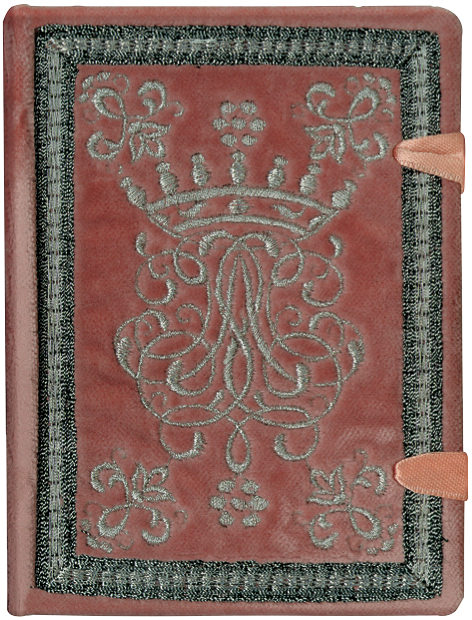
Dating from the late period of French book painting, we have a small book of prayers written and painted for Anne of Brittany’s younger daughter Renée, the Flowers Prayer Book of Renée of France. Until its theft during an exhibition at Montecassino, it graced the Biblioteca Estense in Modena.
By a great stroke of luck, prior to the theft, all preparations were in place for the creation of a facsimile edition of this little gem.
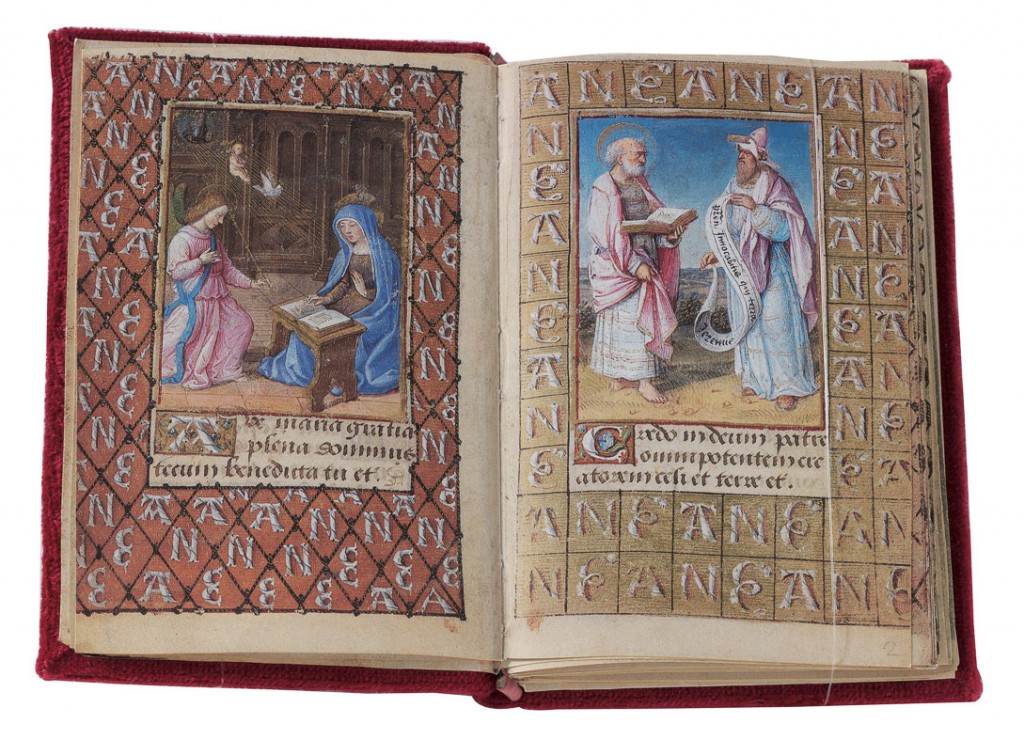
As a result, the facsimile could provide the public with its only access to this manuscript with the embroidered velvet cover. This example shows how important a role reproducing a tome has come to play in protecting cultural treasures.
Italian Renaissance – German Humanism
With the Sforza Book of Hours, Faksimile Verlag took on for the first time an opulent Renaissance manuscript. Two editions were presented: one, in four volumes, just as the original from the British Library in London is exhibited today, and another in a single volume, in order to reproduce the original condition of the almost 700 pages long manuscript with its blend of Italian and Flemish art by painters Giovan Pietro di Birago and Gerard Horenbout. The bejeweled presentation case of sterling silver for this very small, single volume version became an impressive artifact of the modern goldsmith’s art.
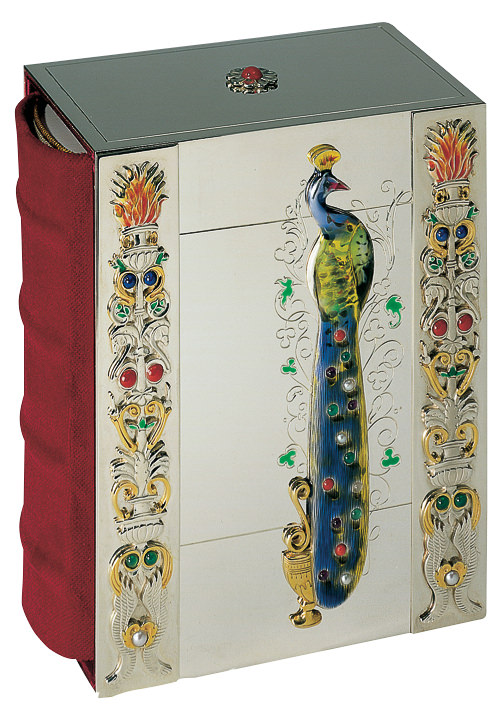
Undoubtedly, it was the Model Book of Giovanni de Grassi that stimulated the crafting of the Italian miniatures and their iconographic models in the Sforza Book of Hours, which had been drawn up by a master builder of the Milan Dome before the end of the 14th century and which directly influenced the painters of Jean Duke of Berry’s manuscripts. With that work, the important model type of book also enriched the Faksimile Verlag’s library.
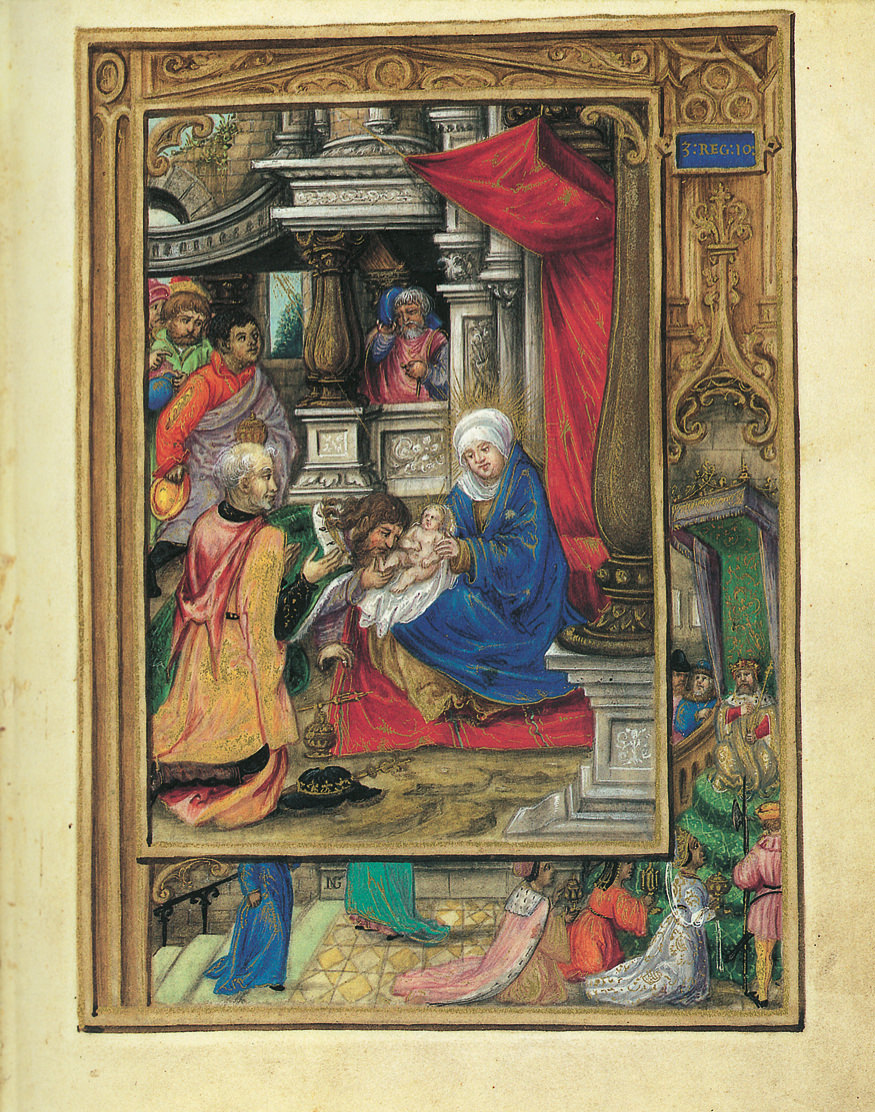
The intense way in which Faksimile Verlag tackled the inexhaustible-seeming manuscript treasures of the libraries of Upper Italy is impressive. The Renaissance’s most beautiful astronomy book, De Sphaera, saw the start of an intensive collaboration with the Biblioteca Estense in Modena. The facsimile edition of this manuscript, with its resplendent colors and lively handwriting, sold out shortly after it appeared, just as quickly as an especially interesting and important German illuminated manuscript from Modena, the Glockendon Hours, the devotional book for Albrecht von Brandenburg that documents Dürer’s influence on book painting in an exemplary fashion.
Hand-painted and hand-written books remained popular even long after the printing of books had begun.

But the Nuremberg Glockendon Hours too makes the history of German humanism and also makes problems of the Reformation and Counterreformation understandable. In this respect, Faksimile Verlag early on picked up a theme that art and intellectual history had neglected for a long time. The German Prayer Book of the Marchioness of Brandenburg from the holdings of the Badische Landesbibliothek in Karlsruhe deepens the understanding of the world of the 16th century in Germany, its iconography, and the new forms of artistic expression in Dürer’s time. It is also evidence that hand-painted and hand-written books remained popular even long after the printing of books had begun.
History Books in the Middle Ages
People of the Middle Ages also wanted to understand historical connections. One of the best-known history books – it recounts the history of the world from the Creation to the last of the Staufers – is the Saxon World Chronicle. Faksimile Verlag wasted no time after German reunification in making the Gotha manuscript of the Saxon World Chronicle accessible. The publisher coupled a great scholarly objective with the facsimile edition of The Book of the World – Saxon World Chronicle: the definitive edition of the entire text of the Saxon World Chronicle was incorporated in this facsimile edition, which since then has come to be called the “the Lucerne edition” in scholarly circles.

A totally different, secular book, shows us the literary aspect of written history: Guido de Columnis’ Trojan War, with its 334 pictures shining with gold, is one of the most beautiful manuscripts in the Österreichische Nationalbibliothek.
This truly great facsimile edition was made possible by the pooling of publishing and distribution resources started in 2006 under the roof of the Bertelsman firm.
The Wonders of the World in Marvelous Miniatures
There is hardly a more renowned book of travel than Marco Polo’s. There is a plethora of manuscript versions, but none can equal the one in Book of Wonders, which today is in the hands of the National Library in Paris. Marco Polo’s account melds fantasy and reality. Important painters like the Boucicaut Master and the Bedford Master’s collaborators created this illuminated manuscript in Parisian workshops at the beginning of the 15th century, endowing it with 84 narrative miniatures. Owners like Count John the Fearless, the Duke of Berry and, from 1523, the French kings, testify to the importance attached to this magnificent manuscript through the centuries to the present day.
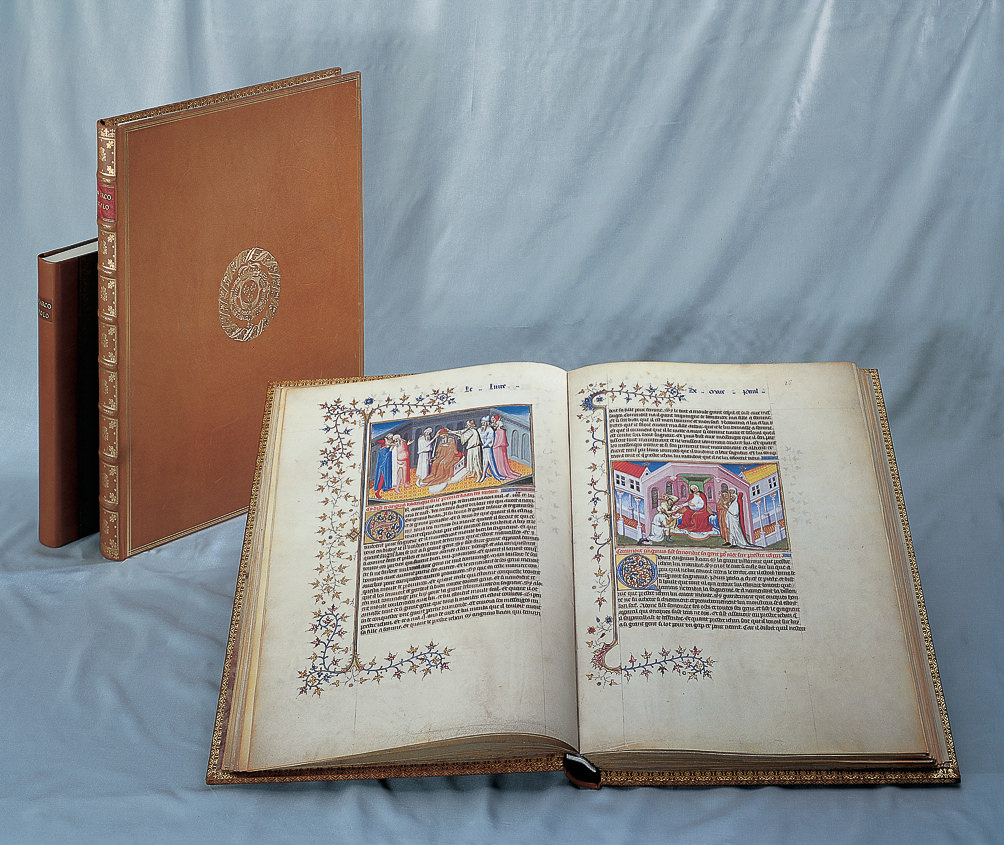
With the account of Marco Polo’s travels, part of the Book of Wonders has become accessible.
Other famous travelogues from this great illuminated manuscript still await their facsimile editions debut.
Conclusions
It is incredible how the whole of Middle Ages can be explored simply by browsing a book. Thanks to the relentless efforts of the publishers we can nowadays experience Medieval times through the pages of a facsimile, without losing any valuable lesson that era has to teach.
Coming next…
- The Story of Faksimile Verlag, Publisher of Fine Facsimile Editions – part 1
- Facsimiles and the Role of Illuminated Manuscripts: the Story of Faksimile Verlag – part 2
- What is a Facsimile: the Story of Faksimile Verlag – part 3
- How it All Began: the Story of Faksimile Verlag – part 4
- From Analog to Digital: the Story of Faksimile Verlag – part 5
- The Making Process of a Facsimile: the Story of Faksimile Verlag – part 6
- Challenges and Magic of Facsimile Production: the Story of Faksimile Verlag – part 7
- Binding, Paper, and Commentary: the Story of Faksimile Verlag – part 8
- Treasures of the Past: the Story of Faksimile Verlag – part 9
- Gems of the Middle Ages: the Story of Faksimile Verlag – part 10
- Flemish, Burgundian, and Biblical Art: the Story of Faksimile Verlag – part 11
- Middle Ages through the Manuscripts: the Story of Faksimile Verlag – part 12
- The Challenges of Gothic Art: the Story of Faksimile Verlag – part 13
- Ottonian and Charlemagne’s Art: the Story of Faksimile Verlag – part 14


